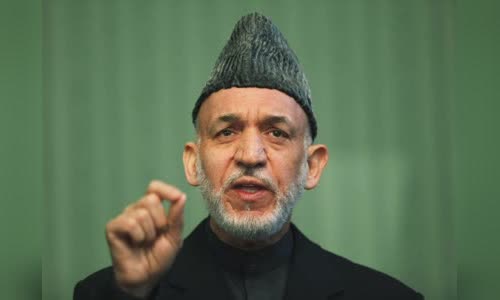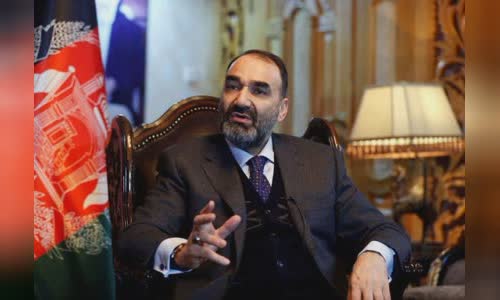In order to establish a comprehensive government and avoid civil war, the Taliban needs to recover the former leaders and ethnic leaders and leaders of Afghanistan on their heads.
After Afghan President Ashraf Ghani ran away from the country on August 15, the Taliban entered the capital of Kabul and embarked on the construction of a new ruling regime.

Photo: Reuters
However, after the victory quickly and overwhelmed to military, this group immediately faced many major challenges, including Kim's Economic Kim's round that was tightened to force the Taliban to make the promise
In that effort, this movement seems to be gathering support, including from the foregras.
Karzai, 63 years old, now sitting at the negotiating table with those who wanted to assassinate him.
Although not much impact on the chaos in the capital, Karzai's attached message is assessed particularly strongly because he appears with his daughters in the video.
Former President Afghanistan Hamid Karzai spoke in a press conference in Kabul in January 2014.
Abdullah, the second power person in the government has been overthrown, also plays an important role in the process of establishing a new government in Afghanistan.
Abdullah used to advise Ahmad Shah Massoud, the leader of the North Alliance, the Taliban subversive force in 2001 under the US support.
According to the commentators Sudhi Ranjan Sen and Eltaf Najafizada of Bloomberg, another politician that Taliban needs to convince former Prime Minister Gulbuddin Hekmatyar, the Hizb-e-Islami party leader for a while and is the veteran face on the main
Hekmatyar used to be a member of the Muslim armed forces in the US during the Cold War to fight the Soviet Union in the 1980s, both an ally, and the Taliban enemy.
In a recent interview, Hekmatyar expressed his support for dialogue and elections to determine the next Afghan government.
Although it is dominant, the Taliban, the main force of Pashtun, seems to understand that any stable government will need to include influential leaders and representatives from the ethnic Uzbek, Tajik and
General Abdul Rashid Dostum, the Uzbek leader and former Vice President Afghanistan, was among them.

Photo: Reuters
Dostum supports the Government of Ghani and holds the vice president within 6 years since 2013. He has been accused of committing a war crime, including mass murder, but denies the whole.
As soon as the Taliban is on the momentum like a bamboo, Dostum has returned to Afghanistan and was supposed to help protect the city of Mazar-e-Sharif in the north.
Ata Mohammad Noor, the leader of the Tajik ethnicity, once participated in wars in Afghanistan since the 1990s and was among the biggest enemies of the Taliban, which was also a significant influence leader.
Atta Mohammad Noor, former Governor of Balkh Province, interviewed in Kabul, Afghanistan, in January 2017.
He served as a governor of Balkh, the most prosperous local Afghanistan, until he was made by Ghani in 2018. After Mazar-e-Sharif, the capital of Balkh province, falling into Taliban's hand, Noor fled with
When the Taliban began to rise at the beginning of the year, Noor was one of the first to call people to stand up against this movement.
Amrullah Saleh, the former Vice President claimed to be a legal leadership after Ghani left Afghanistan, was also calling for resistance against the Taliban.
Saleh is in the Panjshir valley north of the country and seems to have shaking hands with Ahmad Massoud, another leader of the Tajik and a son Ahmad Shah Massoud, Leader of the North Alliance.
Massoud announced that his forces were ready to confront the Taliban again, but this possibility was thought to depend on whether Massoud received significant help from outside or not.
Meanwhile, the prominent leader of the Hazara is the former Vice President Mohammad Karim Khalili.
The future of Afghanistan depends on this, he said.



 Art Crum
Art Crum







